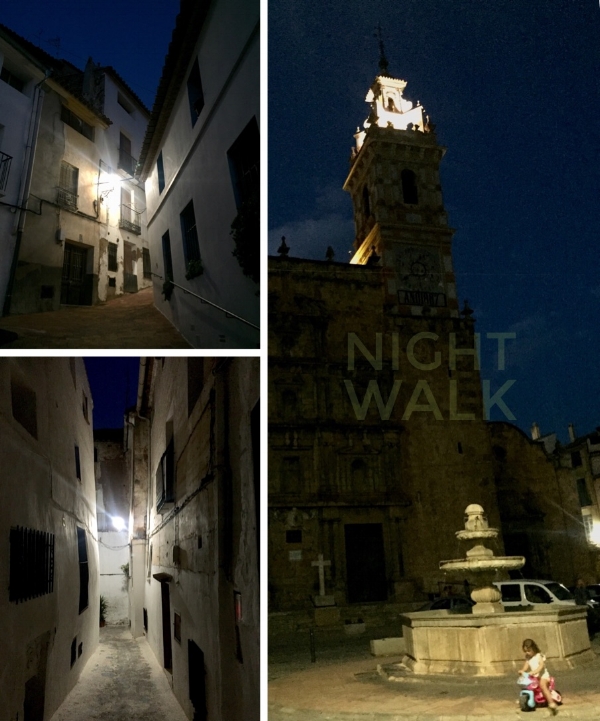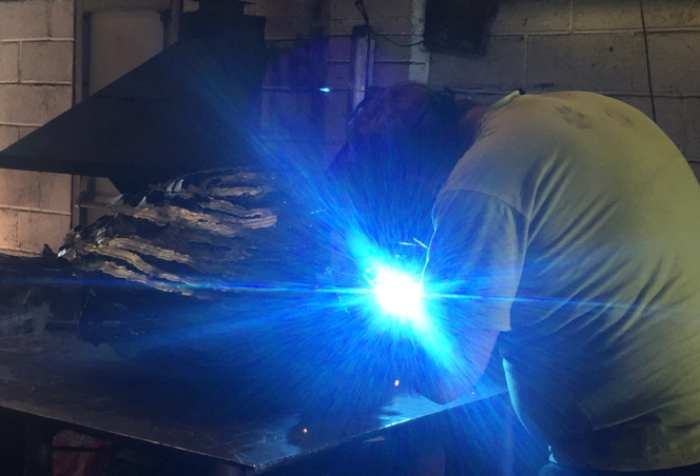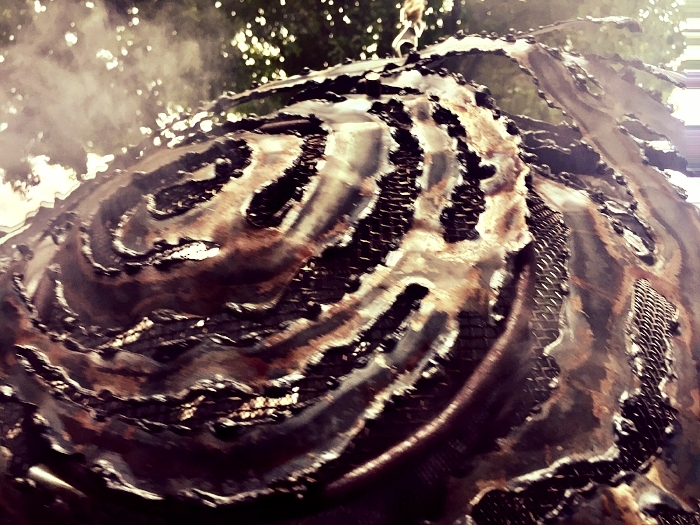DAY 12 12 September 2018
El Golgól Lavadero
It’s 10.15am and the builders merchant is bound to be open I thought, so I walked up to the roundabout, but ‘non’; there’s an unadvertised coffee break between 10-11am.
I had not explored this upper, more modern part of town before. Here is the Post Office, pharmacist, Tourist Information, a green-grocer (where I bought some superior looking paella rice and fresh garlic). I also discover the Gimnasio Municipal and am shown round by a lady from the Pilates class. It’s clean and best of all it has a sauna! I have to join at the Town Hall for 10€.
Most importantly I discover El Gorgól. I have now paid my respects to all the Lavaderos; it looks strangely marooned amongst modern flats, but as I step under the whitewashed rafters and hear the sound of the water pouring out of the spout into the pale jade-coloured tank, I know the Naiads are still present.
Hand cooked crisps, paella rice and garlic
Then off to the supermarket to buy supper- I’m going to attempt a fish version of paella and then home, via the Chinese Bazaar where I buy a yoga mat.
Nearly every town has a Chinese Bazaar which stock almost everything.
It’s 12.30 and I hotfoot back to the builders merchants to explain to the woman, that I want to buy an irrigation sluice gate- por favor. Of course I have to revert to drawing one and am told I have to buy the whole thing - sluice and gate.
Sluice gates are an integral part of the local irrigation system, which was originally installed by the Arabs. The channels feed every garden and vegetable plot (campo) in the town and the sluice gates (compuerto) are opened and closed in a strict rota and timetable.
There are three sizes and I pick the smallest; it’s concrete and I have to carry it home. I discover that VAT is 25% in Spain.
This piece sits in the irrigation channel; it’s quite complex when you look at it carefully.
Me encanta mi compuerta de riego! It’s a truly wonderful object. It looks simple but every surface has been refined and engineered. The gate (compuerta) rocks nicely in its slot.
The gate is lifted out of the channel to allow the waters to flow.
I had thought I might paint my sluice-gate, but I’m going to live with it for a while and have placed it on a shelf surrounded by Naiad prints.
‘Ready-made....’
In the evening it’s yoga in the nearby town of Vilar. Shin, a Korean acupuncturist married to a Basque architect, gives me a lift to the class held in an old people’s community hall. It is a mix of Hatha, Tai Chi and relaxation.
My attempt at paella, but I’m sure the locals wouldn’t approve!
I don’t think I should call it paella, but it was very nice with a mix of salmon, hake? and shrimps. Traditionally, the best bit is the crispy rice burnt to the bottom of the pan-delicious.
El Compuerto on the studio shelf











































































































